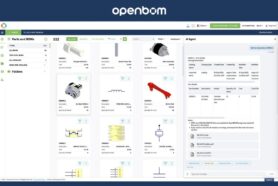
In the domain of manufacturing, Excel stands as the ubiquitous tool for managing crucial product information. From bill of materials to supplier details, its familiarity and ease of use have made it the easy choice for engineers and professionals alike.
Yet, as data volumes swell and complexities mount, many find themselves grappling with the question of Excel’s limitations. Some companies even contemplate appointing a “Chief Excel Officer” to wrangle the growing Excel sprawl, while others explore alternative solutions. But, for many companies, it is happening too late and the damage from using Excel costs a lot from late deliveries, unexpected costs, engineering mistakes, and many others.
The Examples of Excel Usage:
The widespread adoption of Excel in the industry is staggering. One day, I’ve seen a Fortune 500 company resort to Excel for managing complex processes like new product development and purchasing. Astonishingly, even Formula 1 teams, paragons of cutting-edge technology, have found themselves entangled in the web of Excel’s limitations.
My last “favorite” example came from the publication – Formula 1 chief appalled to find a team using Excel to manage 20,000 car parts. The team’s leadership recognized the urgent need to overhaul their systems, citing Excel’s inadequacy in handling the complexities of modern Formula 1 operations. Here is a quote:
“There’s a new boss at a storied 47-year-old Formula 1 team, and he’s eager to shake things up. He’s been saying that the team is far behind its competition in technology and coordination. And Excel is a big part of it. Starting in early 2023, Williams team principal James Vowles and chief technical officer Pat Fry started reworking the F1 team’s systems for designing and building its car. It would be painful, but the pain would keep the team from falling even further behind. As they started figuring out new processes and systems, they encountered what they considered a core issue: Microsoft Excel. “When you start tracking hundreds of thousands of components through your organization moving around, an Excel spreadsheet is useless,” Vowles told The Race. Because of the multiple states each part could be in—ordered, back ordered, inspected, returned—humans are often left to work out the details. “And once you start putting that level of complexity in, which is where modern Formula 1 is, the Excel spreadsheet falls over, and humans fall over. And that’s exactly where we are.”
Why BOMs are Too Complex for Excel:
The complexity of managing Bill of Materials (BOMs) exemplifies Excel’s limitations. Unlike a simple spreadsheet, BOMs represent a hierarchical structure crucial for maintaining a single source of truth across an organization. Tasks such as “where used” queries, rollup formulas, and file attachments pose significant challenges within Excel’s confines. These complexities demand a more robust solution tailored to the complexity of manufacturing data management.
In my earlier article, I explained – 5 Reasons Why BOM is More Complex Than a Spreadsheet and Why You Need to Appreciate It. Here they are :
- BOM is a Structure, Not Just a Flat List;
- BOM Maintains a Single Source of Truth;
- “Where Used” Queries Are Essential;
- Need for Rollup Formulas Beyond Simple Summation;
- Attachment of Files Directly to the Item or BOM Instance Info.
Read more in the article, but I think you’ve got the idea.
Identifying the Tipping Point
One of our readers asked a great question – what is the tipping point after which it is becoming obvious for the company that Excel must go and won’t work for the business?
One might wonder: What is the tipping point at which Excel becomes untenable for a manufacturing company? The answer lies in the company’s ability to foresee the limitations of Excel before they spiral out of control. It requires organizational foresight to preemptively address the challenges posed by Excel’s shortcomings.
There is a need to have an organizational skill to prevent companies from going into this place and provide a preemptive strike and find an easy and better way to do so – flexible and lightweight. Not a killer heavyweight PLM platform, but the solution that can remind Excel user experience, needs to be balanced with a company size, be able to import data with minimum disruption, and have enough flexibility to grow. The companies can start using the tool and grow with that. The ideal solution should offer a seamless transition from Excel, retaining its user-friendly interface while providing the scalability and flexibility required for business growth.
Does it make sense? It does for us because this is how we came up with the idea and implementation of OpenBOM.
Conclusion:
Excel, while a stalwart companion in data management, eventually reaches its limits in the manufacturing landscape. Each company has its own tipping point, but the inevitability of Excel’s inadequacy is undeniable. The key lies in recognizing this tipping point early and embracing alternative solutions before Excel’s constraints hinder business operations.
OpenBOM offers a compelling alternative, providing the familiarity of Excel user experience coupled with the robustness needed for modern manufacturing data management. So, why wait for Excel to become a hindrance? Start your journey towards efficient data management with OpenBOM today. Learn from many customers who already did and do it every day.
REGISTER FOR FREE and check how OpenBOM can help you today.
Best, Oleg
Join our newsletter to receive a weekly portion of news, articles, and tips about OpenBOM and our community.










